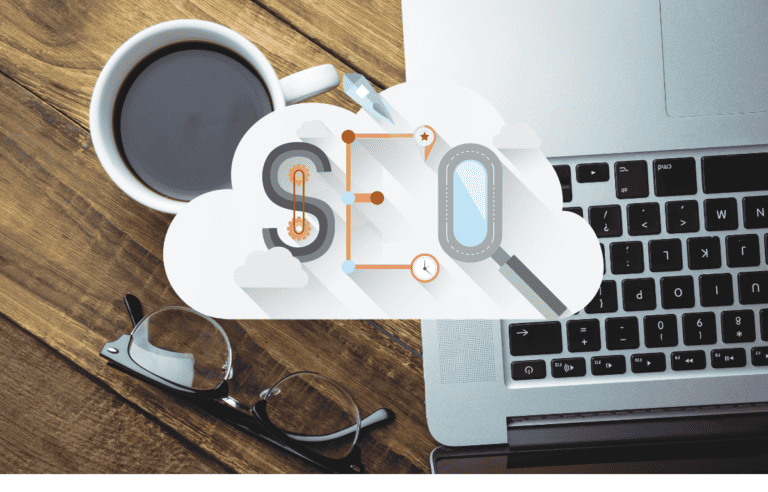Comment démarrer une entreprise en ligne (8 étapes)
Are you looking to start your own online business but don’t know where to begin? Starting an online business has never been easier than it is today. In fact, around 30 percent of business in the US occurs online today, an increase from 19 percent 10 years ago, meaning it only goes up.
In this guide, I’ll walk you through the steps that will help you get started. It doesn’t matter what industry or niche you pick as these tips can work for most of them.
We’ll cover everything from choosing a business idea to setting up your website and marketing your business. So, whether you’re just a total newbie or just looking for some additional tips, read on for advice!
Steps to Start a Small Business Online
1. Choose an Idea and Validate it
There are countless idées de commerce en ligne and finding the right one can be a daunting task. Before you get started, think about things like:
- Knowledge, skills, and experiences: What do you excel at? If you can leverage that expertise or know-how in an online business, the chances of success will increase significantly.
- Interests: Maybe you don’t have enough expertise but are still interested in something. Are you ready to educate yourself on it? You need to be willing to learn about a specific type of business as you go because a good attitude will help you grow.
- Profitability: Can you make enough money and hit your income goals with the business?
Once you have a few ideas, it’s time to validate them to see if they are actually viable businesses. There needs to be demand for the product or service you want to offer on the Web.
Many ways of business idea validation exist, from market research to direct customer feedback. You should also take a look at competitor websites to get an idea of what works and what doesn’t.
2. Create a Business Plan
Il y a plusieurs reasons why you chose to start an online business. Every business needs goals or else you’ll be chasing after nothing. Outline your short-term and long-term goals, budget, and marketing plans.
Think about how you want your business to be in 6 months, a year, three years, and so on, and then make a plan on how to get there. What kind of revenue will you need? How many customers do you need?
A good business plan helps you stay organized and focused on the bigger goals. Plus, it’s key if you ever want to get investors or loans for your business.
3. Choose a Business Structure
The form of ownership you choose depends on the type of business, how much control and liability you want, and taxation considerations. The most common types are:
- Sole proprietorship: This is the simplest form of business and is easy to set up. It’s the best option for individuals just starting out with something online to make extra money. However, you have no legal separation from your business, meaning all liabilities are also taken on by you.
- Partnership: You can share ownership with another person or a group of people. This type of structure has more liability involved but makes it easier to raise capital if needed.
- Limited Liability Company (LLC): An LLC is a separate legal entity from the owners. It has limited liability, so your personal assets are not at risk if something happens to your business.
- Corporation: A corporation is similar to an LLC but more formal and complex. Corporations are owned by shareholders and it’s easy for them to raise capital and get investors on board.
Make sure to properly register your business with the state and local government, too. Depending on where you live, different regulations may apply to your business. Get the necessary licenses, permits, and registrations needed to operate legally if applicable.
You may also need a physical or virtual address for your business. Check out the top digital mailbox options for LLCs and other business types.
4. Set Up a Website
Create a website to showcase your products or services. Most Internet users go to business websites to learn more about what they’re offering.
You need the following to build a new site:
- Domain name: Pick a domain name that’s memorable and easy to spell. Use our générateur de nom d'entreprise to find the right name, whether you need it catchy, creative, feminine, masculine, or something else.
- Web hosting: Choose a reliable web hosting service that works best for your budget and other needs.
- A content management system: You don’t need a fancy platform either — a basic WordPress site is enough to get started.
Keep in mind that your website should offer a good user experience (UX). Below are some elements of a good website:
- Contenu: Create content such as blog posts, videos, podcasts, or other media for your website.
- Visual design: Your website should include eye-catching visuals and useful information about your business.
- Accessibilité: Include contact forms, payment processing options, or any other features that make it easier for customers to purchase from you.
- Vitesse: Ensure your website loads quickly so customers don’t have to wait for pages to load or else they might just leave.
When creating a website, you can either do it yourself if you know how to, use online templates or a website builder, or hire someone for the job.
Once your website is built, test it out across different browsers and devices. Make sure everything works properly and that there are no broken links or images. Additionally, go through the customer journey from start to finish to make sure it’s easy for them to find what they’re looking for and make a purchase.
5. Develop a Payment Method
It’s essential to choose a reliable payment processor if your online business accepts any payments directly. Different processors offer different features, so choose one that works best for your business.
Credit cards are the most popular payment method, but you can also accept payments through PayPal or other digital wallets. Make sure to clearly state your payment policies on your website so customers know what to expect when they shop with you.
6. Set up Social Media Pages
Social media is essential in connecting with your customers and building an audience. Create social media accounts on the platforms that your target demographic uses most.
Start by creating pages on Facebook, Instagram, Twitter, and other popular networks. You could start by focusing on growing a few first. Include a link to your website in your profile and share content that resonates with your target audience.
Make sure to post regularly, interact with people who comment on your posts, and respond to any messages quickly. You can also use social media to showcase stories about customers or employees, host giveaways, or build relationships with influencers in your industry.
7. Market Your Online Business
Utilize social media, content marketing, search engine optimization (Référencement), email marketing, and more to increase visibility and build an audience.
Make sure to create a strategy to target the right people, connect with them over the right channels, and engage them in meaningful conversations.
You can also use digital advertising such as pay-per-click (PPC) or display ads to reach potential customers. Just make sure to track your results so you know what’s working and what’s not.
8. Progress Faster Using the Right Online Business Tools
There are tons of online business tools available today to help you run your business more efficiently. Choose the ones that make sense for your type of business and budget.
For example, if you’re running an e-commerce store, use a tool such as Shopify or BigCommerce to keep track of customers and orders. If you need customer service or support, consider a tool like Zendesk or Freshdesk.
Even more AI software tools exist to help you automate business tasks like content creation and SEO. You’ll save time and money while getting the same or possibly better quality.
Finally, make sure to stay up to date on the latest online business trends and tools. This will help you remain competitive in the market.
Conclusion
By following these steps, you can get your online business up and running quickly and give clients or customers the best possible experience when they shop for products or services with you.
Good luck with setting up your online business! Don’t forget to keep track of important business analytics so you know what’s working and what needs improvement.
Lire aussi : Starting a Small Business (Motivational Quotes)







